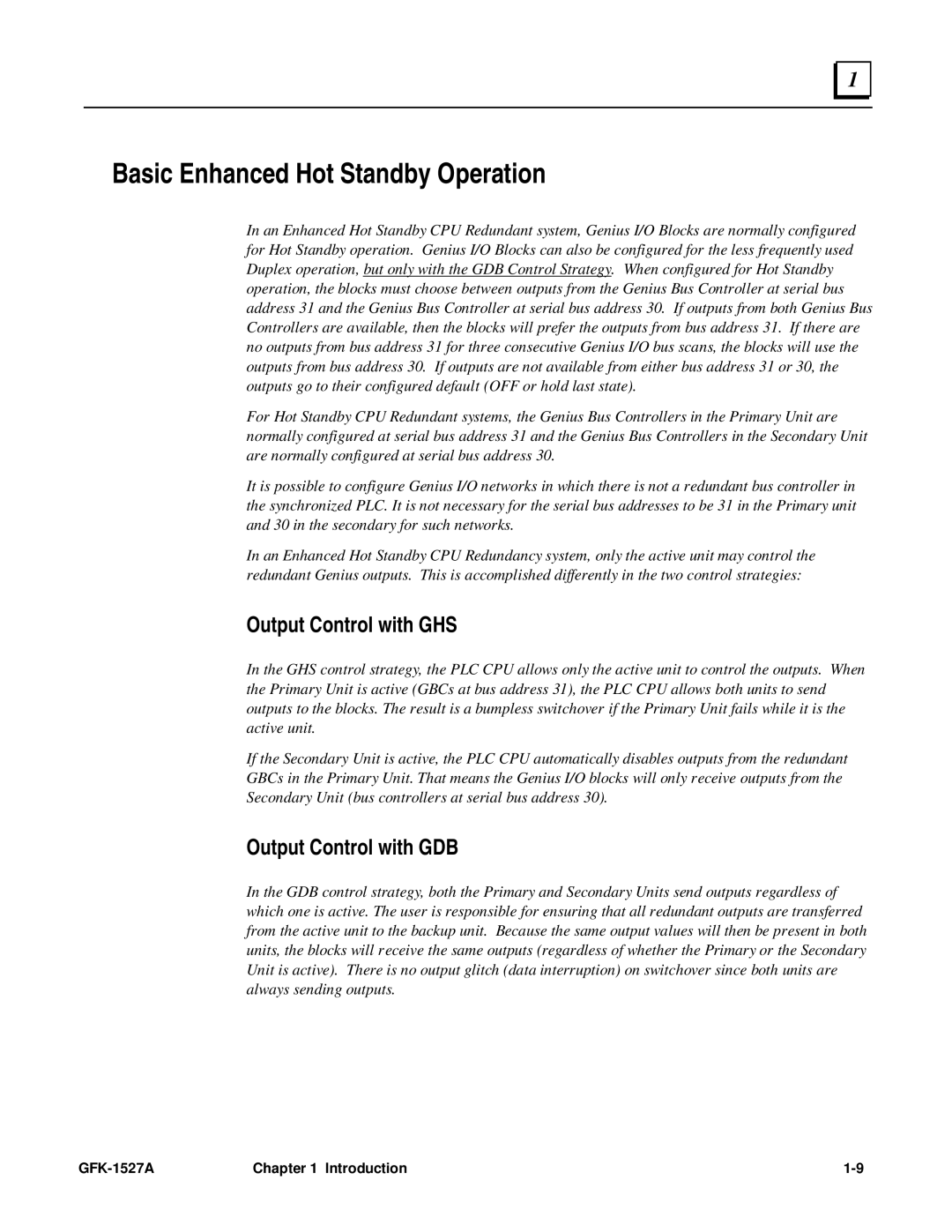1 |
Basic Enhanced Hot Standby Operation
In an Enhanced Hot Standby CPU Redundant system, Genius I/O Blocks are normally configured for Hot Standby operation. Genius I/O Blocks can also be configured for the less frequently used Duplex operation, but only with the GDB Control Strategy. When configured for Hot Standby operation, the blocks must choose between outputs from the Genius Bus Controller at serial bus address 31 and the Genius Bus Controller at serial bus address 30. If outputs from both Genius Bus Controllers are available, then the blocks will prefer the outputs from bus address 31. If there are no outputs from bus address 31 for three consecutive Genius I/O bus scans, the blocks will use the outputs from bus address 30. If outputs are not available from either bus address 31 or 30, the outputs go to their configured default (OFF or hold last state).
For Hot Standby CPU Redundant systems, the Genius Bus Controllers in the Primary Unit are normally configured at serial bus address 31 and the Genius Bus Controllers in the Secondary Unit are normally configured at serial bus address 30.
It is possible to configure Genius I/O networks in which there is not a redundant bus controller in the synchronized PLC. It is not necessary for the serial bus addresses to be 31 in the Primary unit and 30 in the secondary for such networks.
In an Enhanced Hot Standby CPU Redundancy system, only the active unit may control the redundant Genius outputs. This is accomplished differently in the two control strategies:
Output Control with GHS
In the GHS control strategy, the PLC CPU allows only the active unit to control the outputs. When the Primary Unit is active (GBCs at bus address 31), the PLC CPU allows both units to send outputs to the blocks. The result is a bumpless switchover if the Primary Unit fails while it is the active unit.
If the Secondary Unit is active, the PLC CPU automatically disables outputs from the redundant GBCs in the Primary Unit. That means the Genius I/O blocks will only receive outputs from the Secondary Unit (bus controllers at serial bus address 30).
Output Control with GDB
In the GDB control strategy, both the Primary and Secondary Units send outputs regardless of which one is active. The user is responsible for ensuring that all redundant outputs are transferred from the active unit to the backup unit. Because the same output values will then be present in both units, the blocks will receive the same outputs (regardless of whether the Primary or the Secondary Unit is active). There is no output glitch (data interruption) on switchover since both units are always sending outputs.
Chapter 1 Introduction |
